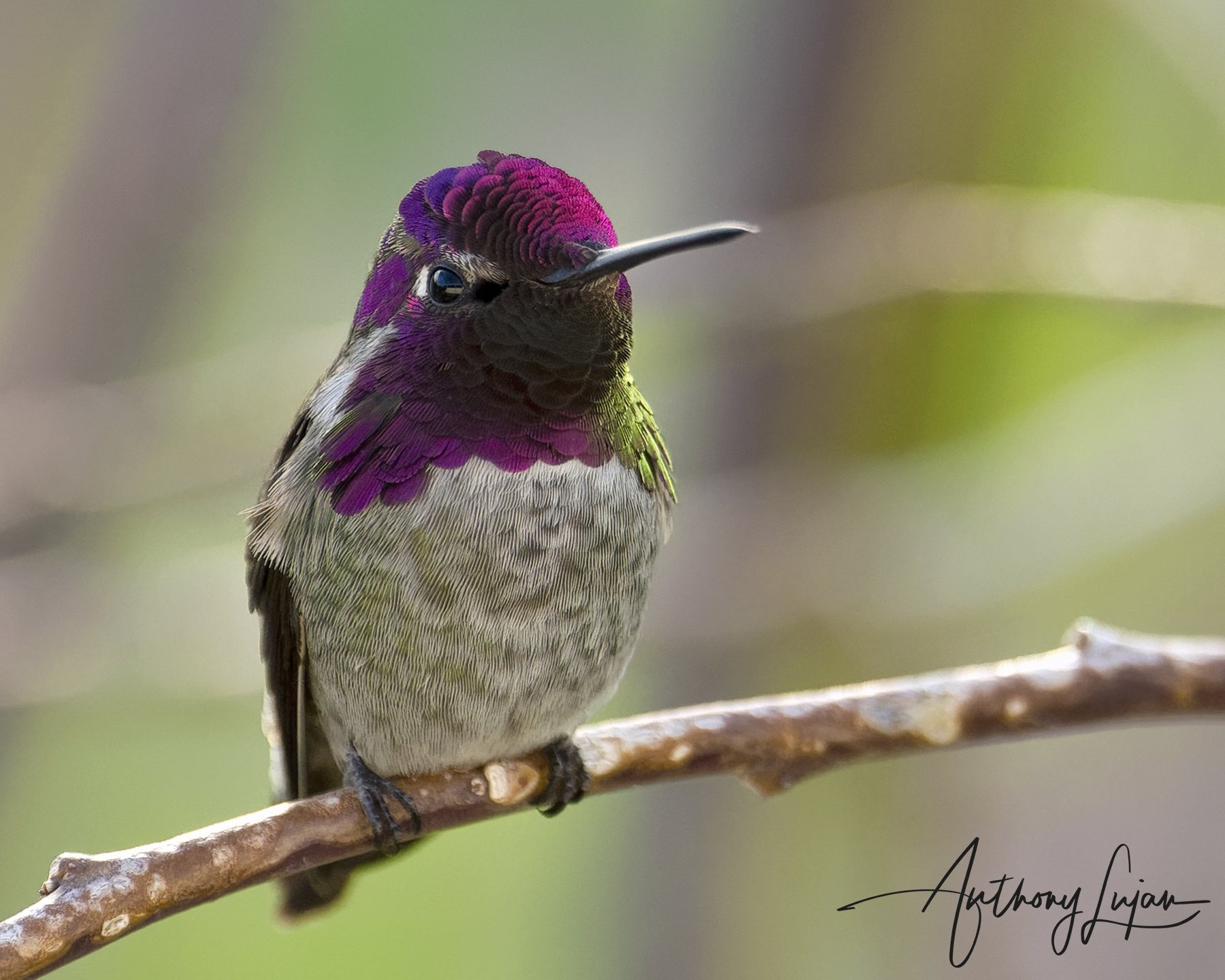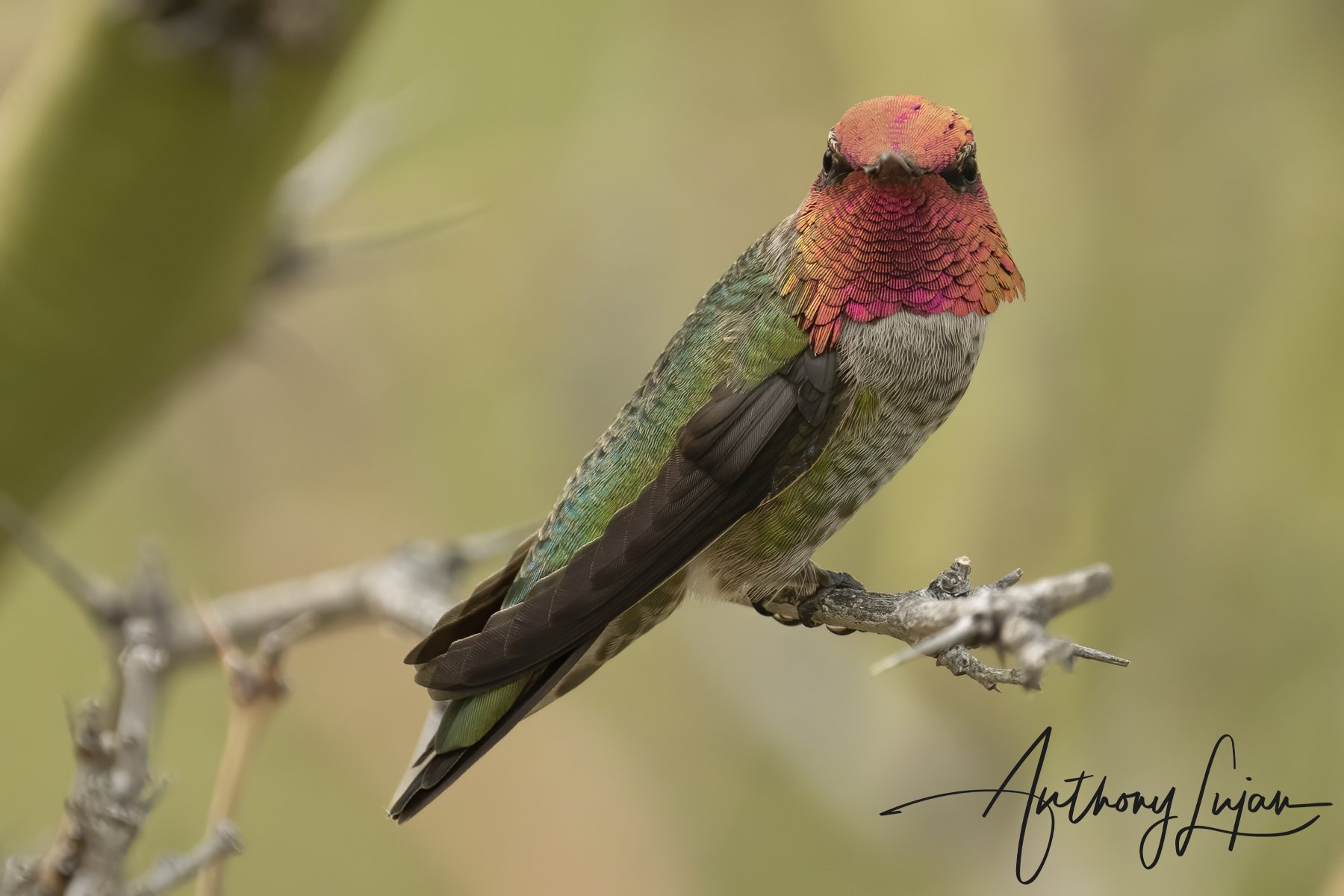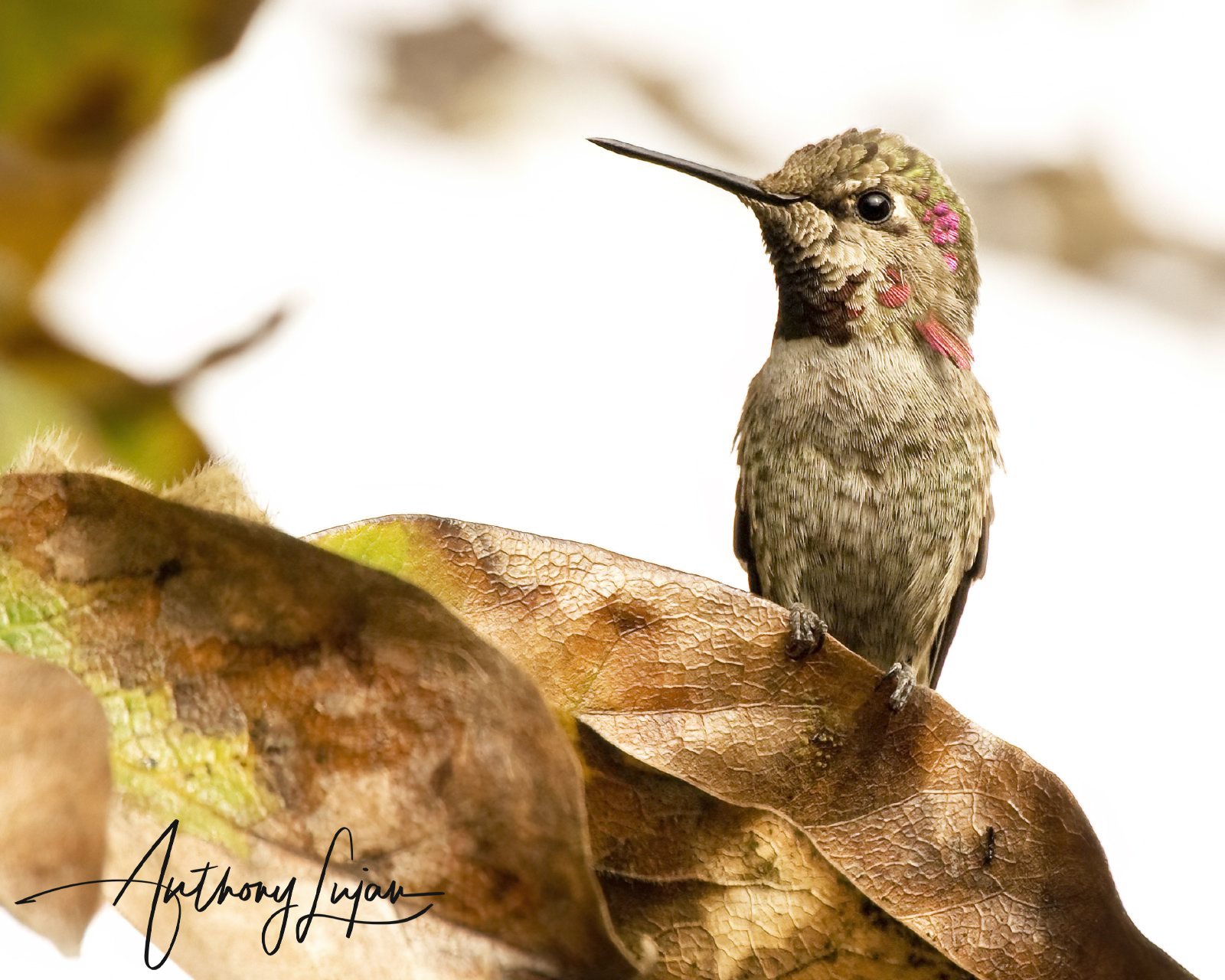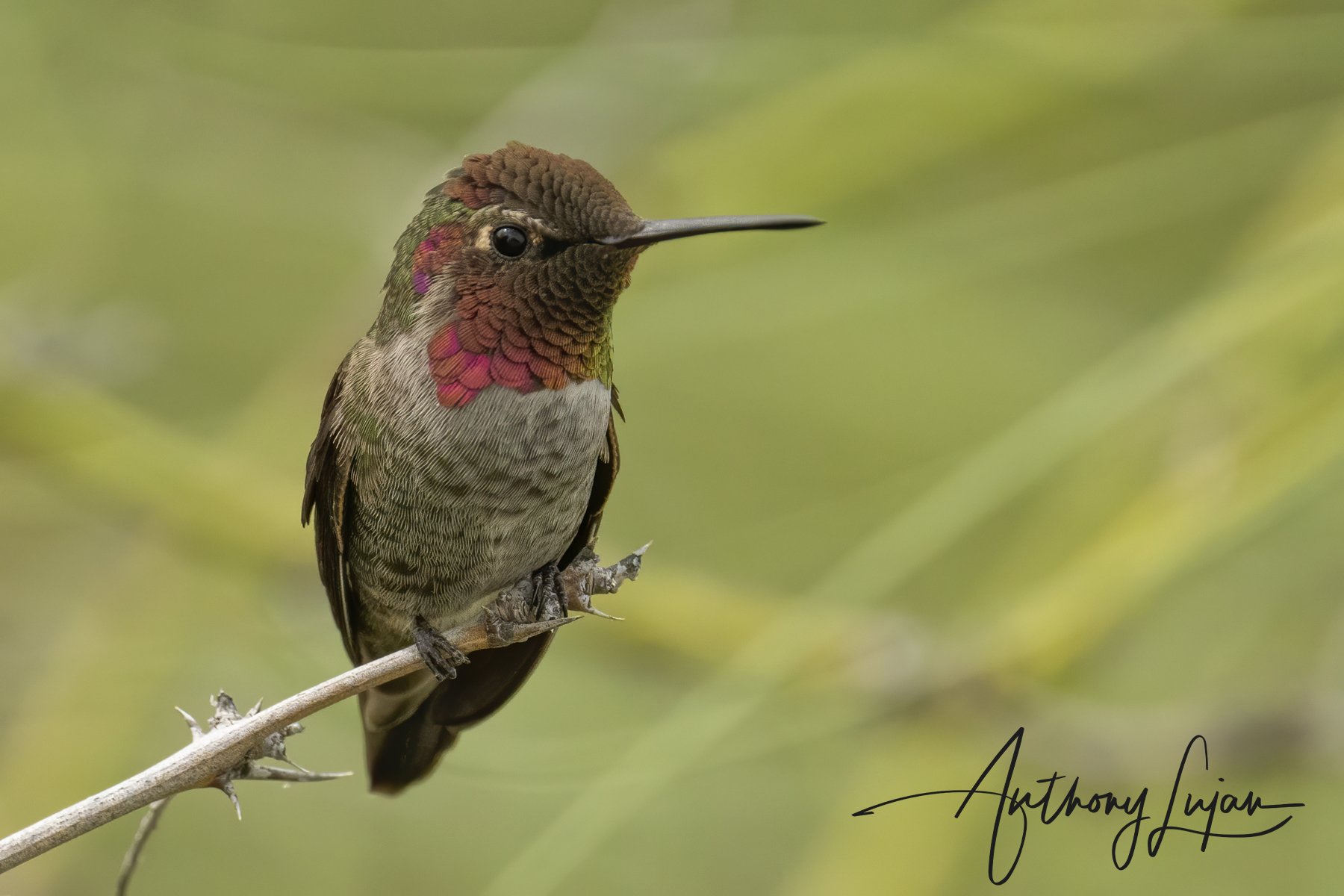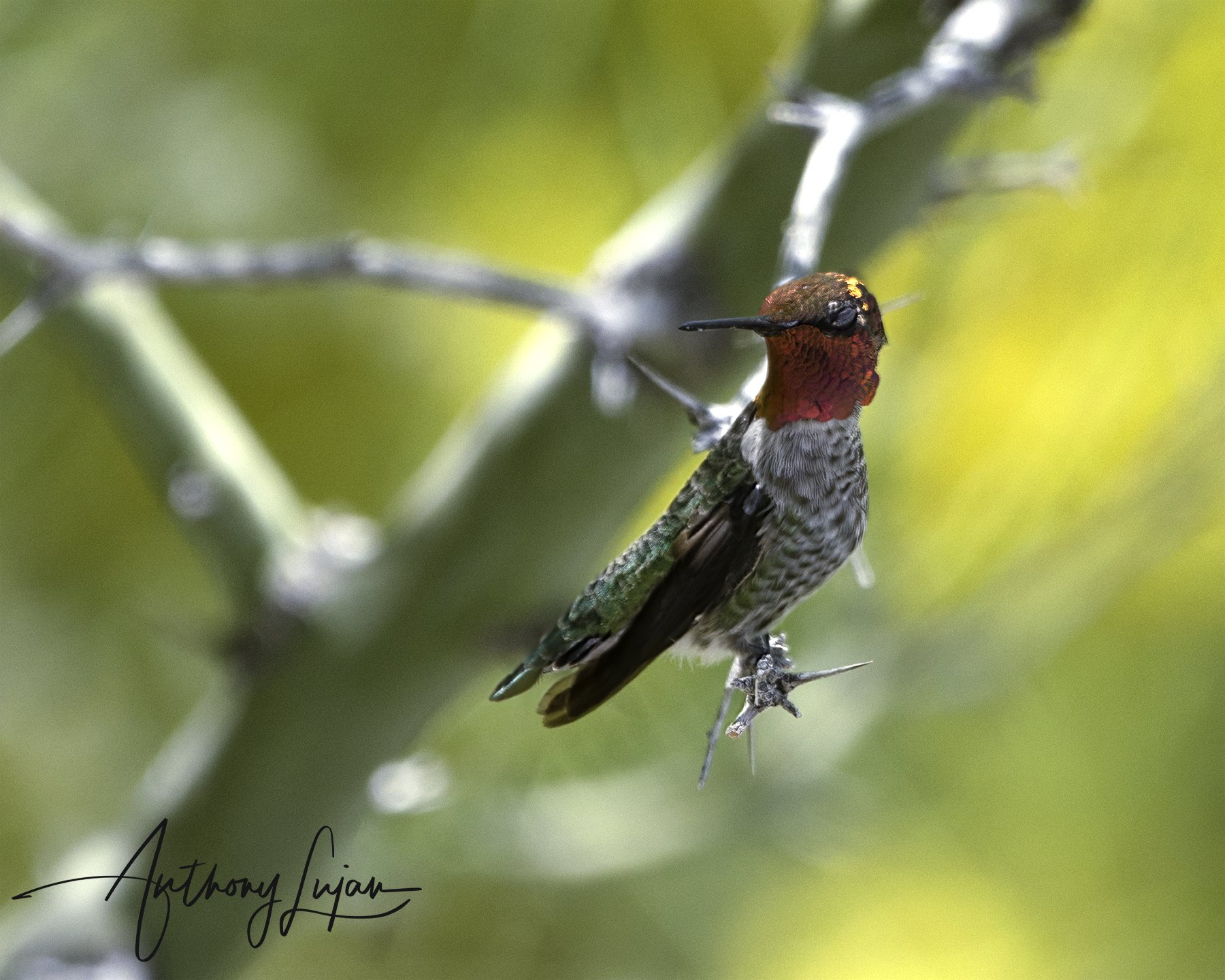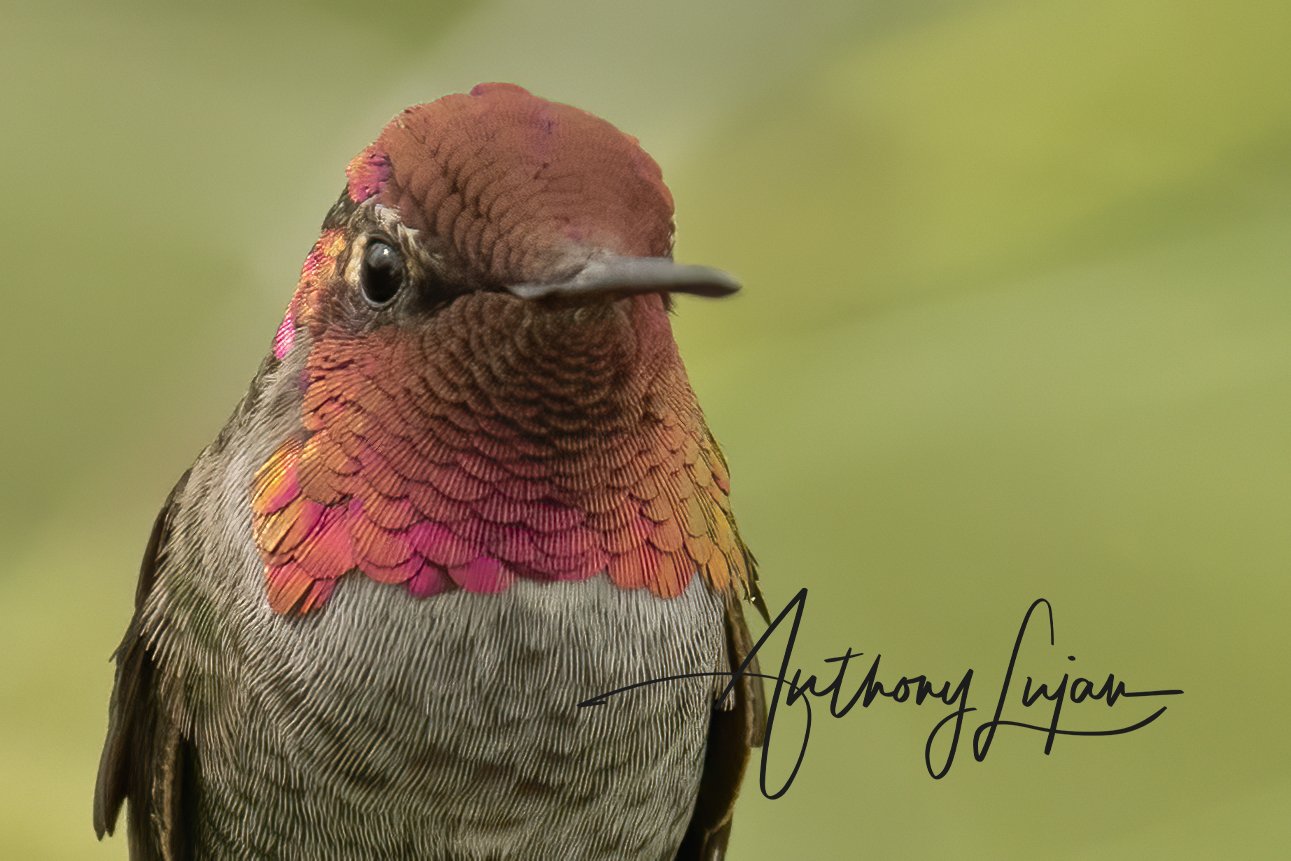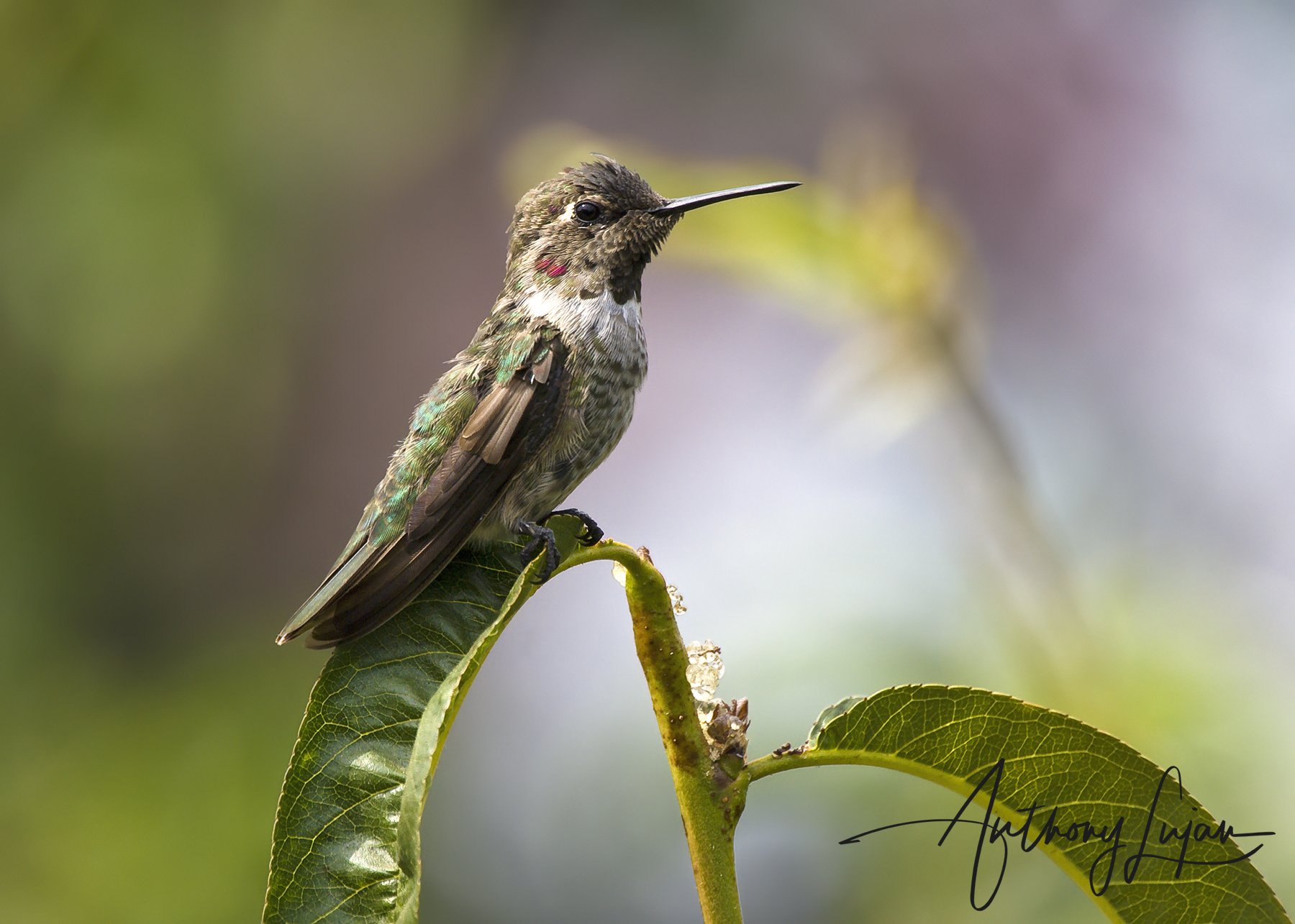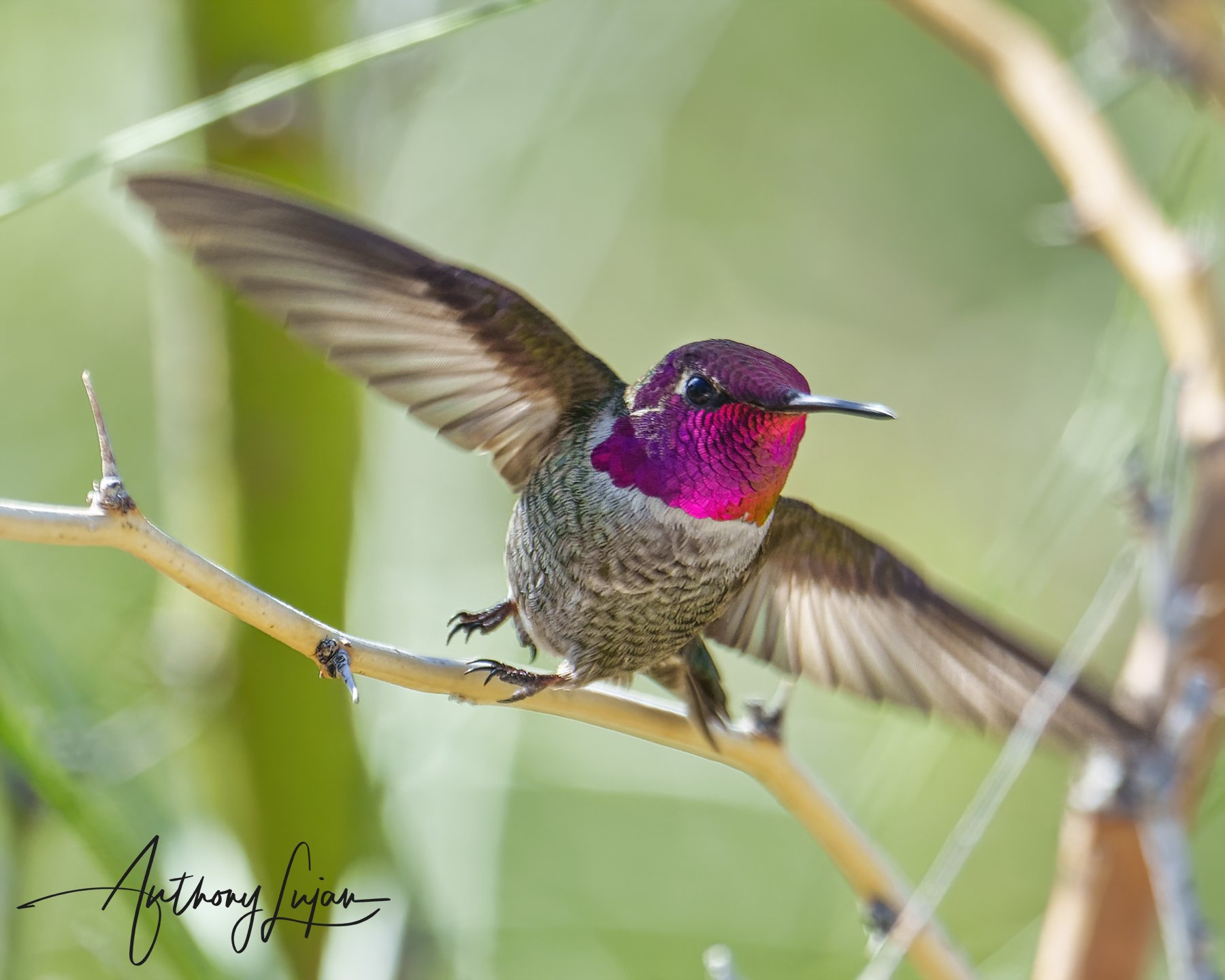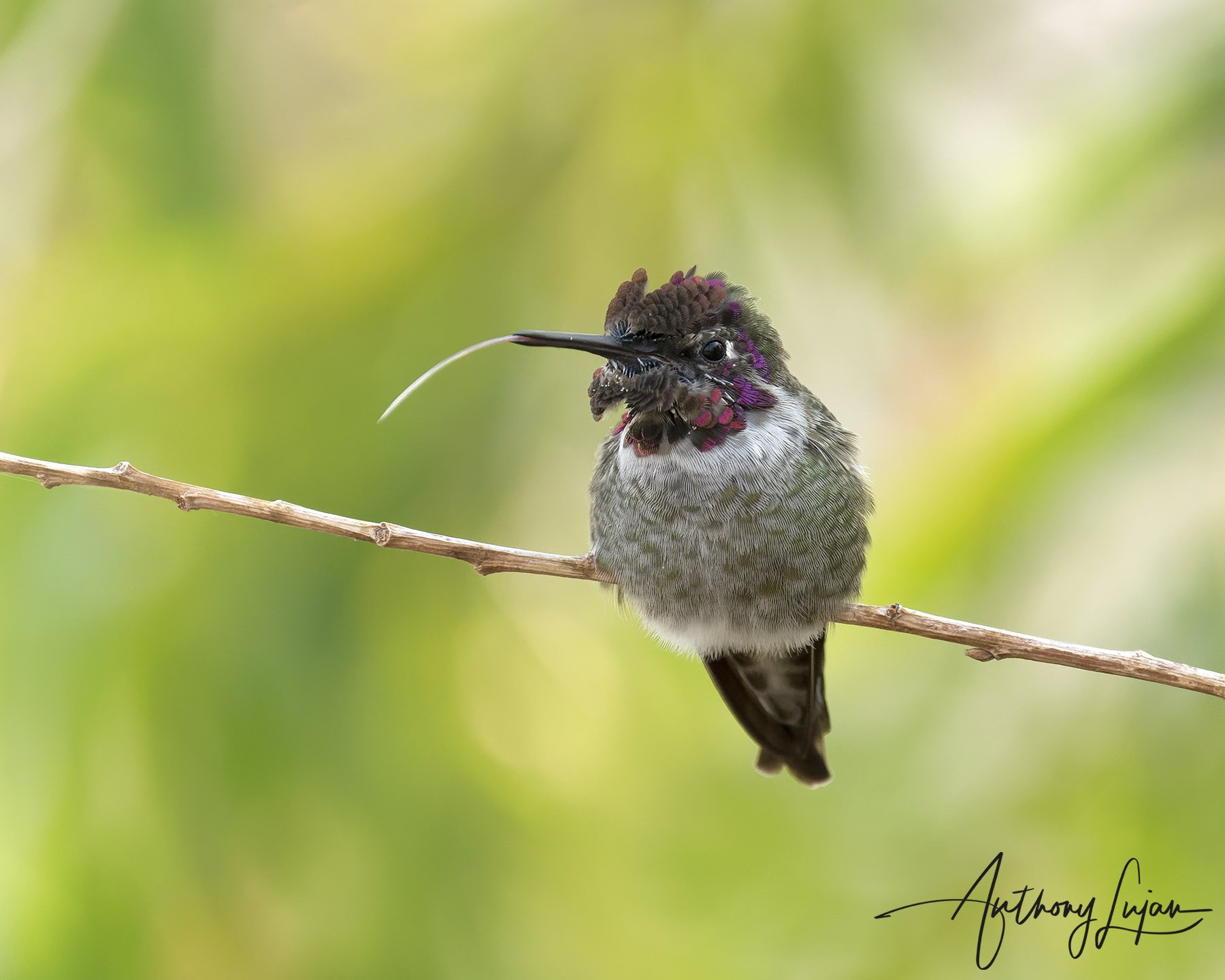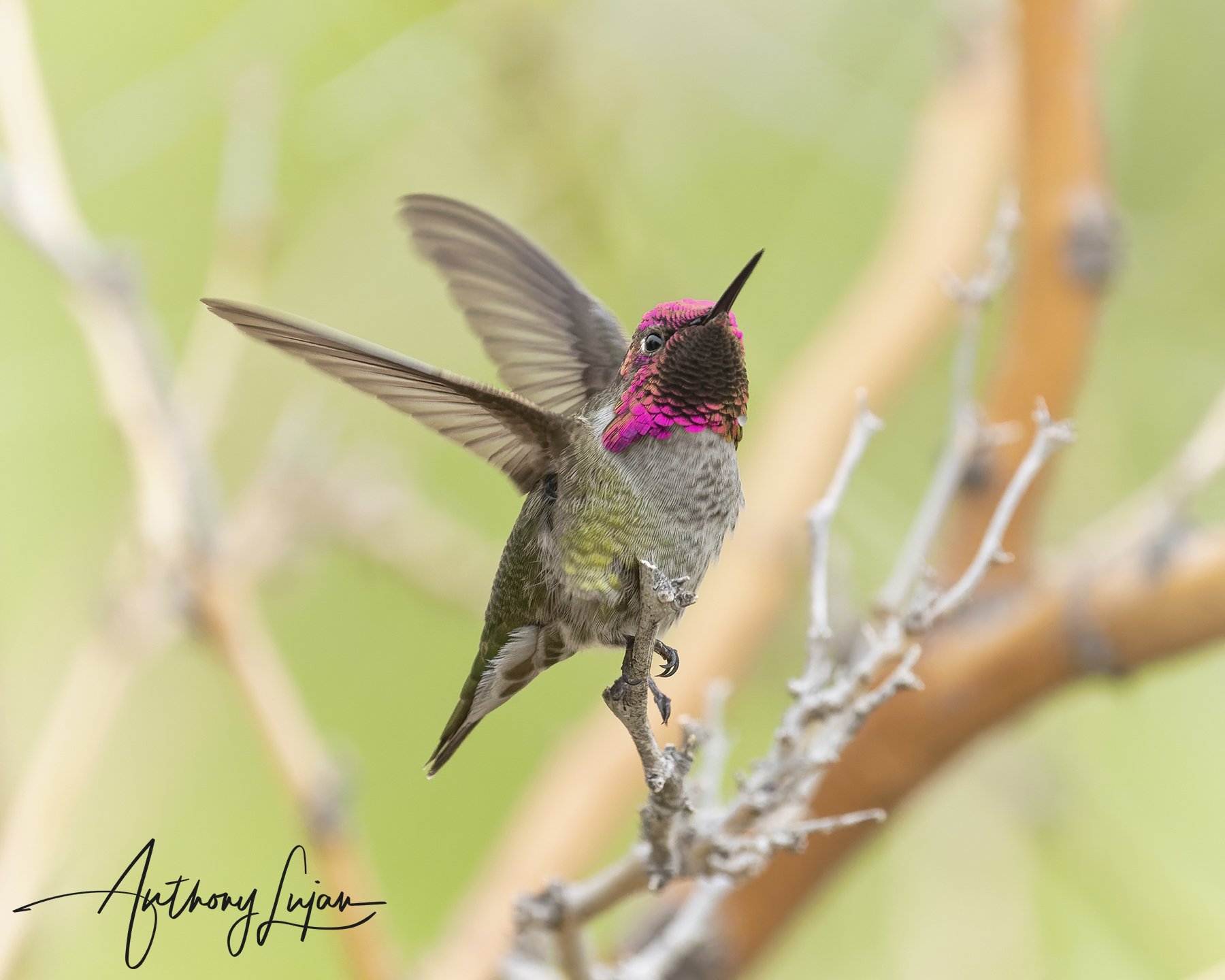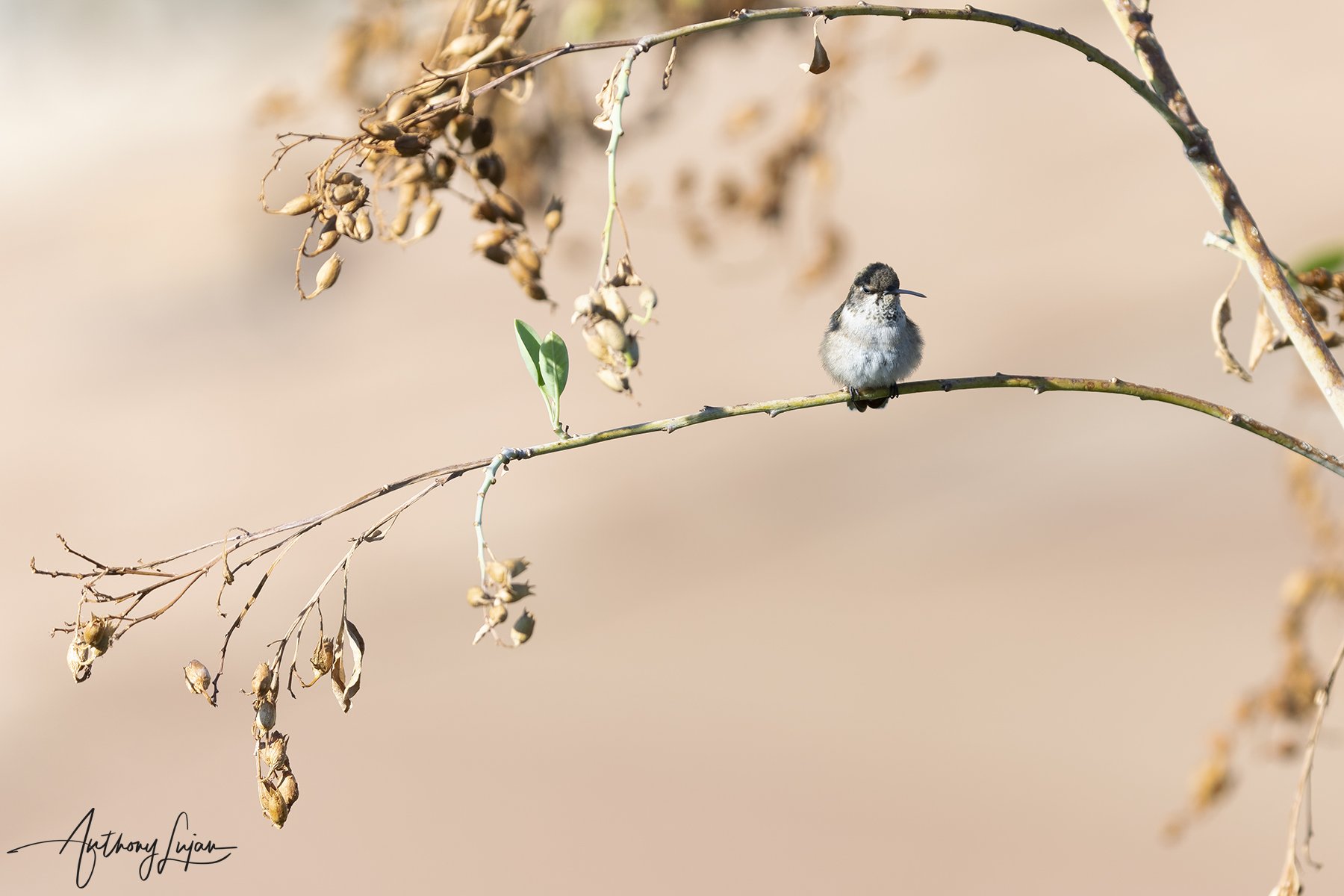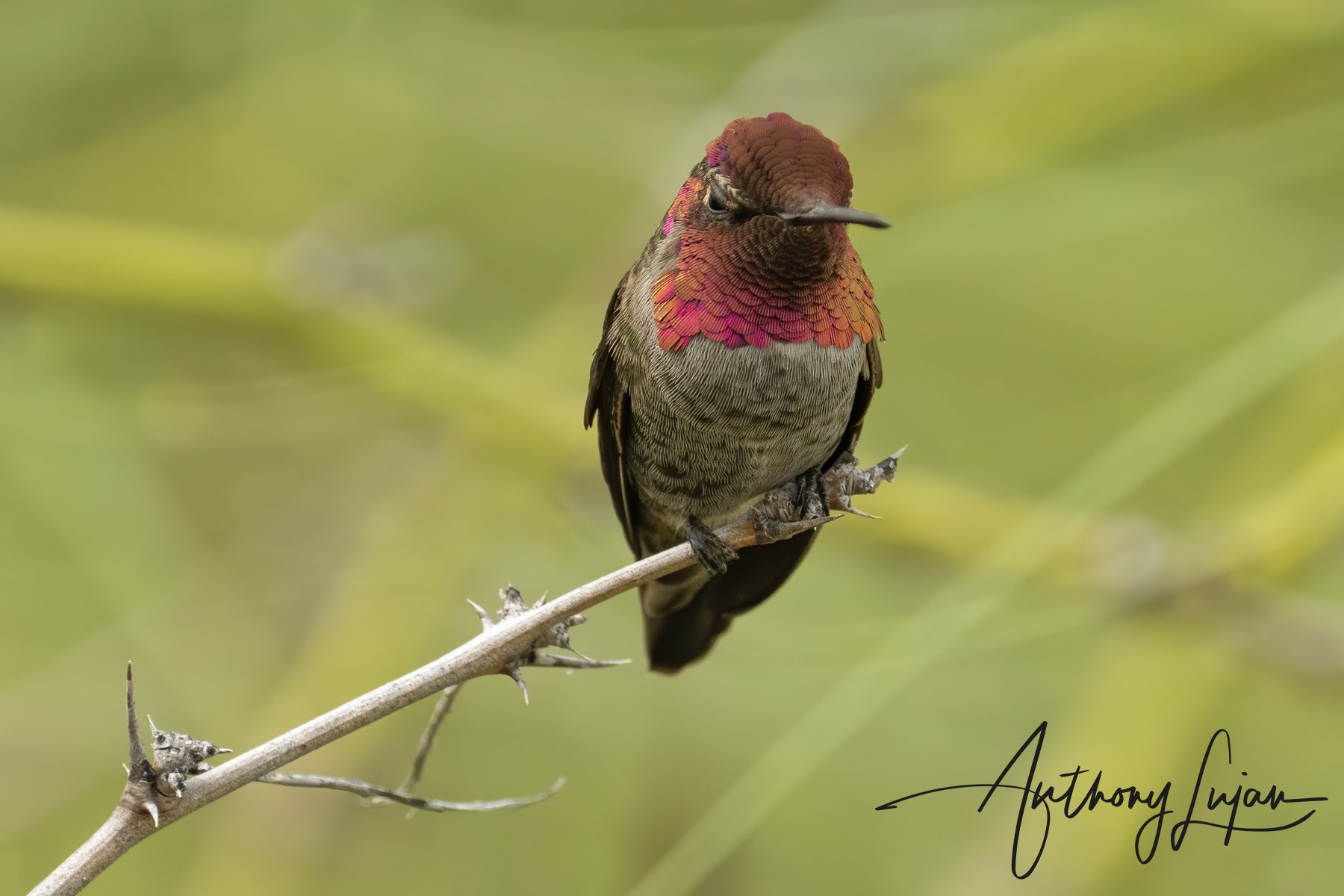Anna’s
Common name: Anna's Hummingbird
Scientific name: Calypte anna
Clades: Mellisugini - Bees
Let's break down Calypte anna:
Calypte: This is the genus name, derived from the Greek word "kalyptos" (καλυπτός), which means "covered" or "concealed." The name may refer to the bird's appearance, particularly its distinctive, often iridescent, plumage or its crown and throat feathers, which might appear covered or hidden in certain angles of light.
Anna: This is the species name, which is typically thought to be in honor of a person. In this case, "Anna" is likely named after someone significant, such as a person involved in the discovery or study of the species, or it could be named for a prominent figure in the history of ornithology.
Therefore, Calypte anna can be interpreted as "Anna's hummingbird", with the species name honoring an individual (often believed to be named after Anna Masséna, the Duchess of Rivoli).
Anna's hummingbirds are 3.9 to 4.3 in (9.9 to 10.9 cm) long with a wingspan of 4.7 inches (12 cm) and a weight range of 0.1 to 0.2 oz (2.8 to 5.7 g).
Relatively large-headed and chunky. Gray and green overall, lacking buffy or orangey tones. Males have a shocking magenta head, which appears dark when not catching the light. Females have dingy grayish underparts and often show a dark patch in the center of the throat. Note the relatively short, straight bill compared with Black-chinned or Costa’s Hummingbird. Common year-round in the Pacific states of the U.S., mainly in relatively open or scrubby habitats including desert scrub and chaparral. Frequently seen in suburban yards and gardens, often visiting sugar-water feeders.
Identification by eBird and Merlin
Anna’s can be found along the western coast of North America, from southern Canada to northern Baja California, and inland to southern and central Arizona, extreme southern Nevada and southeastern Utah, and western Texas. They tend to be permanent residents within their range. However, birds have been spotted far outside their range in such places as southern Alaska, Saskatchewan, New York, Florida, Louisiana, and Newfoundland.
